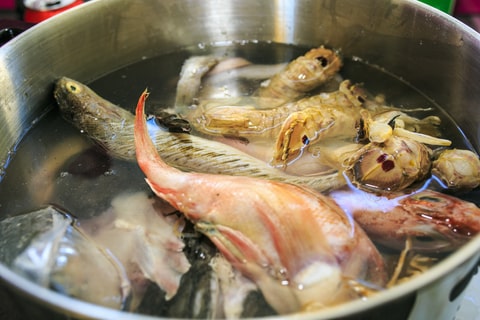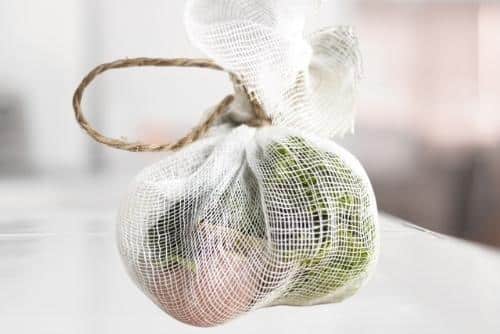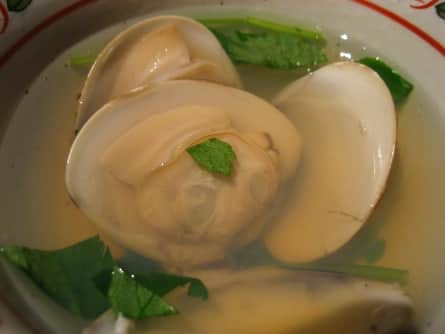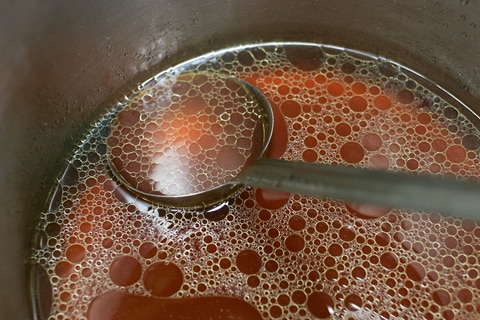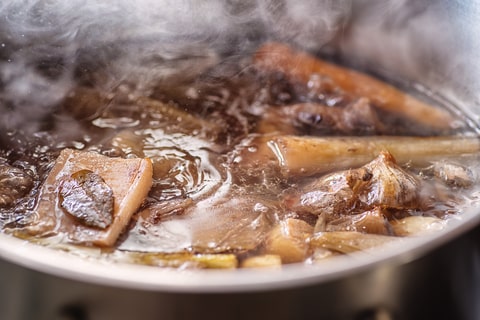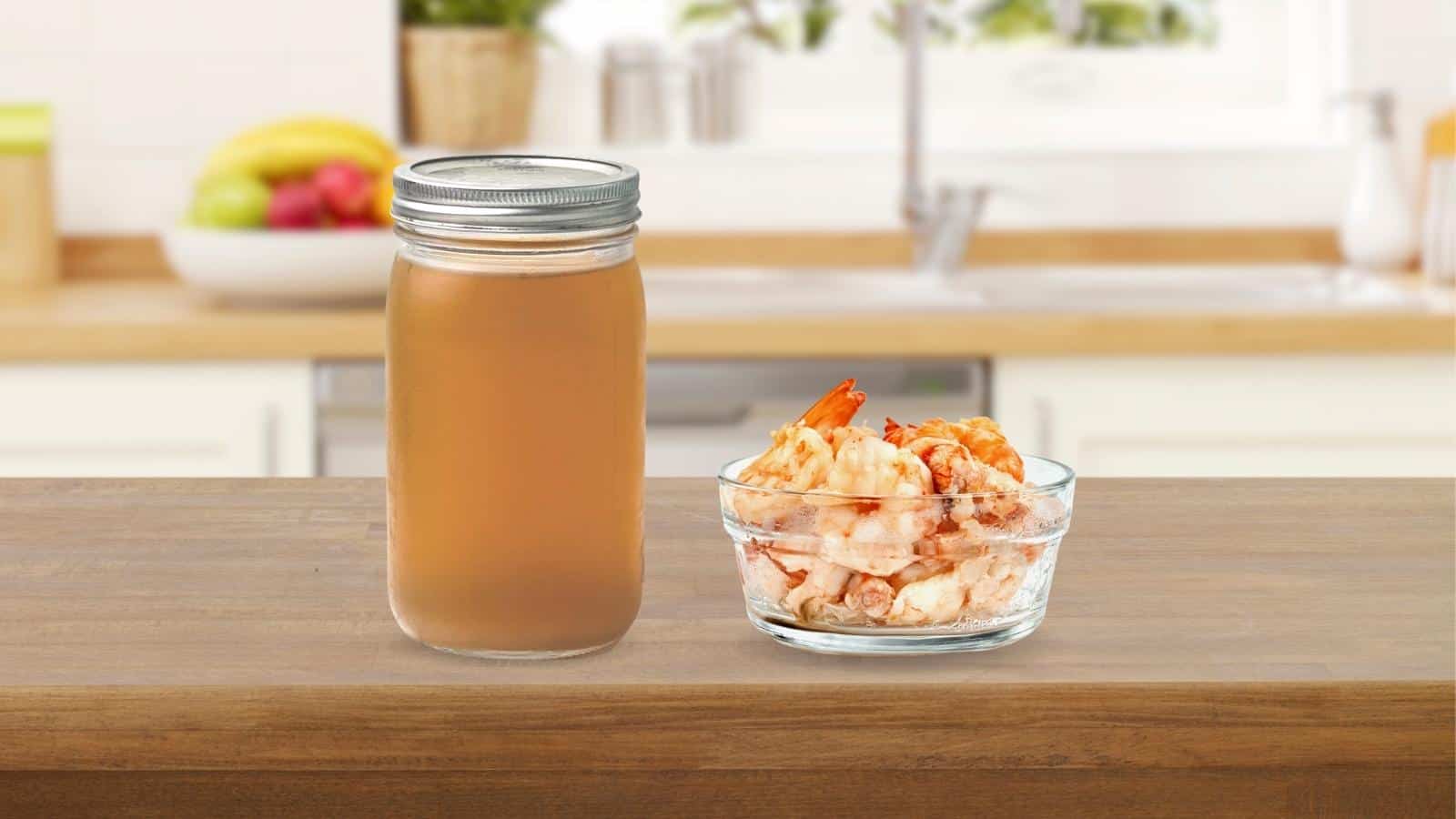
Stocks and broths are essential for some recipes as they add enriching flavor to the food. People who are fond of seafood would know the importance of shrimp stock. In addition, they offer many health benefits as well.
The shrimp stock is an excellent option for people looking for ways to control their cholesterol levels and obesity. Besides, the immune system is significantly healed because of the impressive amount of nutrients added by it.
Some people don’t prefer the store-bought shrimp stock, so they make it at home using shrimp shells and heads, garlic, dried herbs, and mirepoix.
The shrimp stock has a tangerine and yellow color, which can tantalize the taste buds. As far as the taste is concerned, shrimp stock has that rich shrimpy flavor that we all love.
Shrimp Stock Substitutes
Now that we are aware of the flavor, taste, and nutritional aspects of shrimp stock, let’s take a look at its substitutes. Shrimp stock is not available in all areas of the world.
So, if you don’t find it in your nearby grocery store, you may want to consider its substitutes as a last resort.
1. Fish Stock
The fish stock, also known as fumet, makes a great substitute for shrimp stock. It can add savory and seafood flavor to the recipes. Fish stock can be added to a variety of seafood dishes, sauces,velouté, and soups.
Even more, it will perfectly complement the seafood stews like bouillabaisse. The fish stock is made by simmering the heads and bones of flatfish without calling for the extra step of sweating the bones.
Generally, white fish or halibut is used for making fish stock. The fish stock has a delicate seafood flavor with a clear appearance. It is versatile because it is not as gelatinous as the strong fish stock. You can easily get a hold of fish stock in grocery stores.
For making a fish stock at home, gather all the ingredients. Tie the thyme, clove, sprigs, peppercorns, bay leaf, and parsley into a piece of cheesecloth and make a sachet d’epices. Set it aside for some time.
Take out a soup pot or heavy-bottomed stockpot and heat the butter in it.
Turn the flame from medium to low and add vegetables including celery, onion, and carrot with the lid on. It shouldn’t take more than five minutes for onions to turn slightly translucent.
Now, add the fish bones and use a piece of parchment paper to cover the mixture. You have to warm the bones enough to turn them slightly opaque.
Now get rid of the lid and the parchment. Add the wine and raise the flame until you notice the simmering. Next, pour the sachet and the water.
The flame should be enough for the simmering. Keep cooking for 30 to 45 minutes. In the last step, strain it and refrigerate it as soon as it is chilled.
2. Crab Stock
Crab stock can be used as a base in all sorts of seafood soups because of its rich flavor. A simple crab stock is made from crab shells, carcasses, or even whole crabs.
Other ingredients that need to be added to the stock are black pepper, bay leaves, and parsley.
There are different color variants in crab stock, such as shiny orange hues and a dusky orange. The color of stock depends on the type of crab used for making stock. Crab stock made with high-fat crabs will have a creamy and rich flavor.
The method of making crab stock is beyond easy. It won’t take more than an hour for you to prepare it at your home.
First, take a medium-sized stockpot and place crab carcasses in it. Now add the water and turn the heat on with carcasses covered completely. Proceed to add all the other ingredients except salt.
Make sure you simmer assertively for the next hour. Taste the stock after one hour. If there is a need for more flavor, you have to keep simmering for another 20 minutes. But do so with the lid off to let the flavors condense as the stock cooks down.
After you have achieved the final flavor, salt the stock lightly. Lastly, stain with a fine mesh strainer. If you won’t be immediately using the stock, chill it and store it in the fridge for up to 3 days.
If you want to store it for a long period, consider keeping it in your refrigerator.
3. Clam Juice
The clam juice has a pale yellow color (it might resemble wine). If you are still looking for a substitute for shrimp stock, clam juice will perfectly complement the recipes.
Don’t go for the word juice in its name; it’s actually a broth that results from steaming clams.
With the mineral and salty flavor, it goes fine with seafood recipes, chowders, soups, and sauces. It is also used for replacing the fish sauce, so it’s extremely versatile.
The unique thing about clam juice is that, unlike other broths and stocks, it doesn’t need anything to improve its flavor.
There is no such requirement for herbs or spices or even salt. Instead of hours of simmering, it is ready within 10-15 minutes as soon as the calm opens.
To cook clam juice, start by washing the clams with cold water. Set a medium heat and place a large shallow non-reactive pan. Now add garlic, parsley, and bay leaf to it.
Next, add the wine and let it boil for 5 minutes. After 5 minutes, it must have been reduced to half. Add 2 quarts of water and let it simmer.
In the next step, you have to put the clams into the broth and raise the flame—Cook for 15 minutes and then turn the heat off and steep for 4-5 minutes.
Lastly, drain it through a fine sieve. Cool it down and refrigerate it.
4. Meat Stock
Meat stock is another great option for replacing shrimp stock if you are cooking for someone who is allergic to seafood. Besides, the natural fat content of meat gives a bold flavor to enhance stews and sauces.
When it comes down to meat stock, you can opt for pork stock or beef stock. However, the flavor and taste will differ with the meat used (beef or pork). As far as the flavor is concerned, it will heighten the entire experience.
If you add beef stock, the dish will have a rich brown color and robust flavors. On the contrary, pork stock will deliver a pale yellow color to the recipe.
First of all, trim larger pieces of beef from the bones. Set the oven to 400F. Take a large roasting pan and put bones and beef pieces in it.
Also, add onions, celery, and carrots to the pan. Add a little olive oil and roast for 45 minutes. Keep turning a few times so that the beef browns evenly.
The next step is to transfer the beef and vegetables to a stockpot and keep it aside.
The roasting pan will have some excess grease. Pour it off and place it over medium heat. Now, you can add the tomato paste and cook for 2 minutes while stirring continuously. After 2 minutes, add 2 cups of water and bring it to summer.
Take out the stockpot and add the tomato paste mixture to it. Pour the remaining 3 quarts of water in it as well. You’ll have to add more water if the liquid doesn’t quite cover the bones.
Next, you can add the bay leaf, peppercorns, thyme, and parsley sprigs. Now is the time for you to put the stockpot over a medium-high flame until it boils. Make sure you skim off the foamy scum from the top.
Simmer for 3-4 hours with the lowest heat setting and partially covered pot. By this time, the stock would have gotten its flavor.
People who are fond of a richer and more concentrated flavor can cook longer to reduce it.
In the last step, you’ll have to strain through a cheesecloth-lined strainer. Pour it into a large bowl and refrigerate it until chilled. Remember to remove the solid fat from the surface.
Chicken broth stands first on the list of the most affordable substitutes for shrimp stock. The users can make chicken broth at home or buy it from the grocery store.
The chicken broth has a pale yellow color, but the taste might be bland. For this reason, you have to add bay leaves, parsley, black peppers, or onions to improve the appearance and taste.
Even after adding the seasonings, the chicken broth will taste mild. However, the flavor is richer than the fresh chicken broth. All in all, it can be added to stews, sauces, or side dishes.
As compared to canned chicken broth, the homemade chicken broth will have a rich texture with a savory flavor.
Chicken broth is quite easy to make as it involves a few simple ingredients. Take a large stockpot and add fresh skin-on chicken pieces, onion, parsley, garlic cloves, carrots, and celery. For salts, add kosher salt and whole black peppercorns.
Now, cover them with water. Turn the heat on and bring to a boil. You can reduce the heat now and carry on the simmering for 3 hours.
Lastly, use a large slotted spoon to remove the solids from the broth. You can then drain it. Voila! Your chicken broth is ready!
